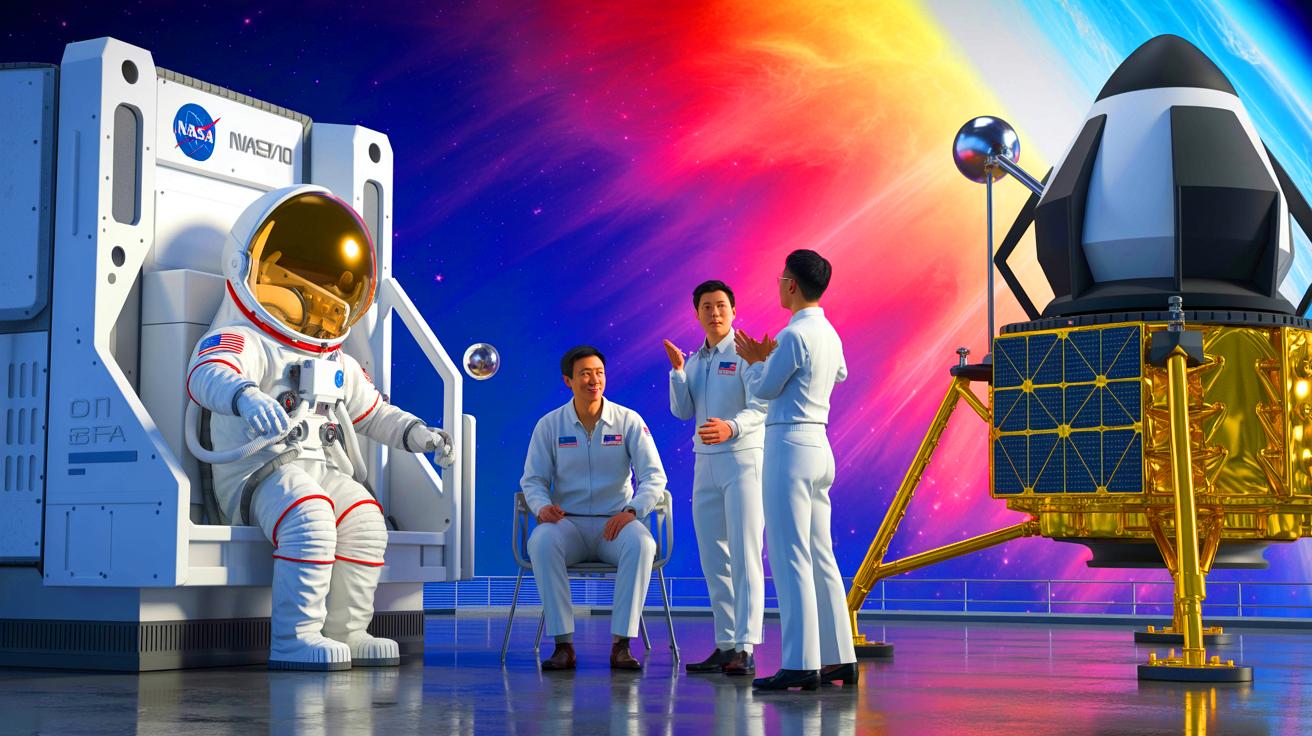- 🚀 The exclusion of Chinese researchers from NASA programs underscores the growing competition between the U.S. and China in space exploration.
- 🌕 NASA is accelerating its lunar ambitions with plans to return astronauts to the Moon by 2027 amid geopolitical tensions.
- 🔒 The policy reflects a broader strategy to protect national security and maintain technological superiority in space.
- 🌐 The decision raises questions about the future of international collaboration in scientific and space endeavors.
The National Aeronautics and Space Administration (NASA) has recently implemented a policy that prohibits Chinese researchers holding U.S. visas from participating in its programs. This decision, initiated by the Trump administration, underscores Washington’s intent to safeguard its lunar projects amid China’s escalating efforts in the space race. The restrictions, effective from early September, exclude Chinese nationals from accessing NASA’s facilities, attending agency-funded meetings, and utilizing its supercomputers. This move reflects the growing competition between the United States and China as both nations strive to assert dominance in space exploration.
Researchers Excluded From Programs
On September 5, NASA enacted a policy that explicitly bans Chinese nationals from participating in its programs. This policy includes prohibiting access to NASA installations, agency-funded meetings, and even its supercomputers. These measures primarily affect researchers in climate science, where high-performance computing is a crucial tool. According to a NASA spokesperson, fewer than a hundred scientists are impacted. However, internal sources suggest the actual effect is more extensive, potentially disrupting the work of young researchers who came to the U.S. to contribute to NASA’s projects.
Amid these restrictions, NASA is also facing significant budget cuts and early retirements, part of a broader restructuring effort by the White House. Despite the considerable impact, NASA officials maintain that these restrictions are independent of the presidential directive issued on August 28, which designated NASA as a strategic national security institution. Bethany Stevens, a NASA spokesperson, clarified that the actions aim to protect the physical and digital security of NASA’s activities.
The Race to the Moon Intensifies
These exclusionary measures occur against a backdrop of heightened competition between Washington and Beijing. China has announced its ambition to send taikonauts to the Moon by 2030, with plans to establish a permanent habitat. Meanwhile, NASA is gearing up to return American astronauts to the lunar surface by 2027 through its Artemis program. Interim NASA Administrator Sean Duffy, a close ally of Donald Trump, emphasized that the U.S. is in a race to the Moon with China. He cautioned that if another country surpasses the U.S., it could enforce an exclusion zone that threatens American lunar base projects.
This rhetoric has resonated in Congress, with Republican Senator Ted Cruz referring to space as a “new strategic frontier” that ties into national security and technological leadership. Democratic Senator Maria Cantwell echoed the urgency of investing in space exploration, asserting the necessity of returning to the Moon before China establishes a permanent presence there.
Strategic Implications and National Security
The decision to exclude Chinese researchers from NASA programs is rooted in broader strategic concerns. With both nations vying for dominance in space, the United States views the Moon as a critical asset for future space exploration and national security. The potential establishment of a Chinese lunar base poses a geopolitical challenge that the U.S. is eager to counteract. As a result, NASA is accelerating its work on developing a nuclear reactor to power a future permanent installation on the Moon, demonstrating the stakes involved in this new era of space competition.
Beyond the immediate impact on scientific collaboration, the policy highlights the broader geopolitical tensions between the U.S. and China. As both countries seek to expand their influence in space, the exclusion of Chinese researchers is a strategic maneuver to maintain technological and strategic superiority. This focus on securing U.S. interests in space reflects a critical aspect of the nation’s broader geopolitical strategy.
Balancing Collaboration and Competition
While the exclusion of Chinese researchers underscores the competitive nature of the U.S.-China space race, it also raises questions about the future of international scientific collaboration. Historically, space exploration has been a field where countries work together for mutual benefit. However, the increasing competition between the U.S. and China complicates this dynamic. As the two nations pursue their lunar ambitions, balancing collaboration with national interests becomes more challenging.
As the space race intensifies, the importance of maintaining open channels of communication between space-faring nations cannot be overstated. While safeguarding national interests is crucial, fostering international cooperation is equally important for advancing scientific knowledge and ensuring the peaceful use of outer space. The current geopolitical landscape presents a complex challenge: how can nations balance the need for security with the benefits of collaboration in space exploration?
As NASA navigates the complexities of the space race with China, the broader implications of this policy remain to be seen. The exclusion of Chinese researchers from NASA programs is a strategic move that reflects the heightened competition between the two nations. As both countries strive to assert their dominance in space, the question arises: how will this new phase of the space race shape the future of international collaboration and competition in space exploration?
This article is based on verified sources and supported by editorial technologies.
Did you like it? 4.4/5 (24)
